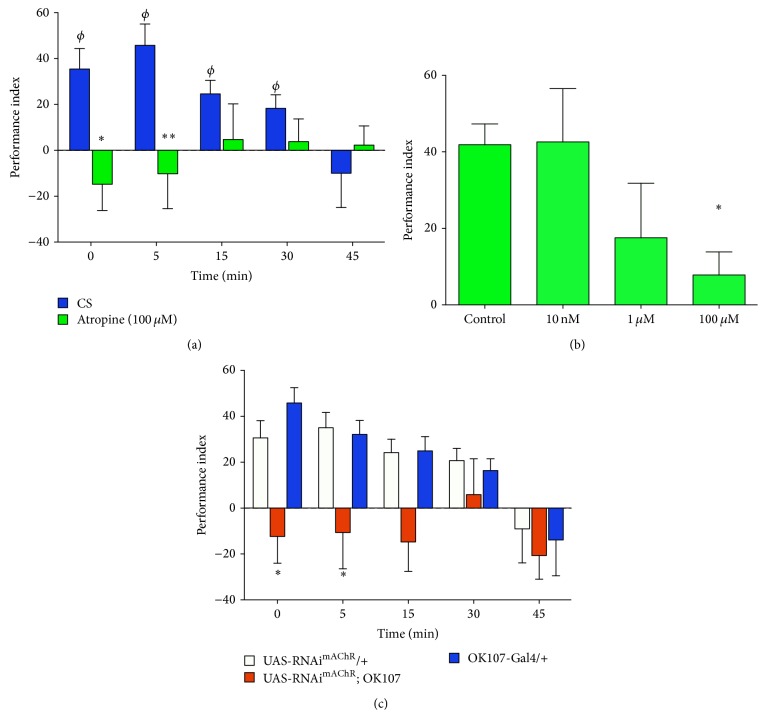Figure 4.
Genetic and pharmacological blockade of mAChRs disrupt aversive olfactory memory. (a) Flies exposed to the mAChR antagonist atropine (100 μM, green bars) are not able to form the aversive olfactory memory as compared to control animals (blue bars). Each data presented was obtained from at least 16 different experiments, each one consisting of 15 or more larvae, so that the minimum amount of animals included in any data point was 317 larvae. ∗, ∗∗ indicate P < 0.05 and P < 0.01, as compared to data in control animals at the same time point (two-way ANOVA followed by Bonferroni multiple comparison post hoc test). ϕ indicates data different from zero in control animals (P < 0.05, Wilcoxon signed rank test). None of the values obtained in RNAi expressing animals was different from zero. (b) Atropine effect is dose-dependent: while no effect on memory is observed in flies exposed to an antagonist concentration of 10 nM, a strong reduction in aversive memory is observed at 100 μM. Partial reduction although with big variability is observed in flies exposed to 1 μM atropine. Values shown for memory performance correspond to data obtained 5 min after training, when training and memory test were carried out in presence of indicated concentrations of the drug. Each type of data was obtained from at least 10 experiments, each one including 15 or more larvae. The minimum amount of larvae in any data point was 151 animals. ∗ indicates P < 0.05 as compared to control (one-way ANOVA followed by Dunn's multiple comparison test). (c) Expression of an RNAi for mAChR (RNAimAChR) in MB disrupts olfactory memory formation. Each data presented was obtained from at least 15 different experiments, each one consisting of 15 or more larvae, so that the minimum amount of animals included in any data point shown was 299 larvae. ∗ indicates P < 0.05 as compared to data in genetic control animals at the same time point (two-way ANOVA followed by Bonferroni multiple comparison post hoc test). Genetic controls show values for performance index different from zero at 0, 5, and 15 min (P < 0.05, Wilcoxon signed rank test). None of the values obtained in RNAi expressing animals was different from zero.

